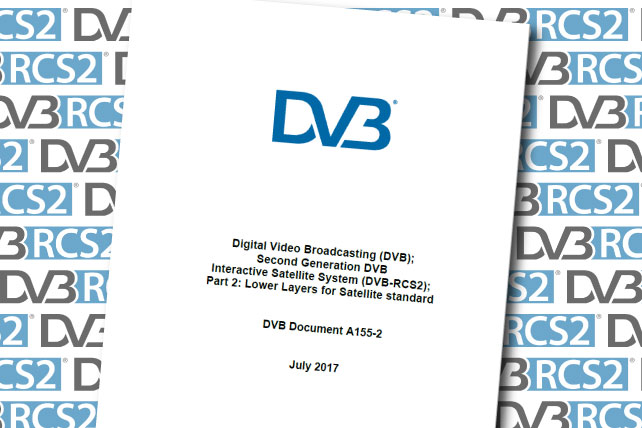
RCS2 BlueBook among key Steering Board decisions
Last week’s 89th meeting of the DVB Steering Board approved an important update to the lower layers of the DVB-RCS2 specification, published as DVB BlueBook A155-2. Related updates to other parts of DVB-RCS2 will follow later this year – the schedule for these and other commercial and technical work items can be found in the latest release of the DVB Workplan, updated following the Steering Board meeting.
New DVB-RCS2 BlueBook
DVB-RCS2 (second generation Return Channel Satellite) is an ETSI technical specification that defines the complete air interface for two-way satellite broadband VSAT (very small aperture terminal) systems. Low cost VSAT equipment can provide highly dynamic, demand-assigned transmission capacity to a broad range of users. DVB-RCS2 provides users with a broadband internet connection without the need for any local terrestrial infrastructure.
RCS2 was first approved by DVB in 2011. In 2012 mobility extensions (DVB-RCS2+M) were added, supporting mobile/nomadic terminals and direct terminal-to-terminal (mesh) connectivity. RCS2 is published in three parts, the second of which has been updated:
- TS 301 545-1 – overview and system level specification (OLS)
- EN 301 545-2 – lower layers specification (LLS)
- TS 301 545-3 – higher layers specification (HLS)
When the update of the other two parts is complete, all three documents will be sent to ETSI for formal publication. The most recent versions are available from the DVB Standards page.
The current update adds the Interactive and Very Low Signal Noise Ratio (VLSNR) profiles of DVB-S2X as new options for the forward link and updates the profiles for the return link. In the return link, the Consumer profile and Supervisory Control and Data Acquisition (SCADA) profile will have linear modulation as mandatory and continuous phase modulation (CPM) as optional. Two new profiles with mandatory CPM are added: Consumer CPM and SCADA CPM.
